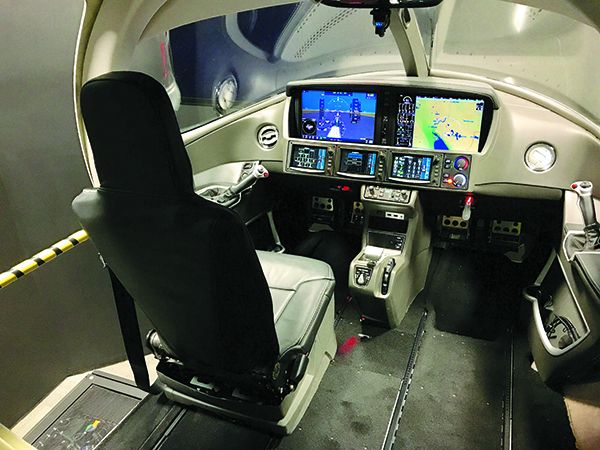In the 1960s and 1970s Beech, Piper and Cessna worked to instill brand loyalty and encourage owners to progressively step up within the product line. More than a few pilots who learned to fly in a Musketeer, Cherokee 140 or Cessna 150 eventually became owners who wound up flying Barons, Aztecs or 400-series Cessnas and in some cases King Airs, Cheyennes or Conquests.
Of the three, only Cessna was able to bring a single-pilot jet to market and it never put together any sort of organized program to help owners of its piston-engine aircraft to smoothly graduate to its turboprops or jets. The radical downturn of general aviation in the 1980s would also have put paid to any plans it may have had to do so.
Enter Cirrus. Even before it formally announced its plans to build a jet, the company, and Cirrus SR-series owners, started making plans for piston Cirrus owner pilots to become jet Cirrus owner pilots.
According to Matt Bergwall, director of the Vision Jet product line, Cirrus was determined to make the transition as easy as possible. That began with human factors, including designing the Vision flight deck to be as similar to the SR series as possible. For example, the flap switch, half yoke and throttle are in the same places as on the SR. The Vision Jet has one new switch—for a thing called a retractable landing gear—otherwise a piston Cirrus pilot should feel right at home in the left seat of a Vision Jet.
Cirrus long ago learned the tremendous importance of providing high-quality training to its customers. According to Bergwall, that led directly to the decision to keep Vision Jet training in house. And Cirrus starts jet training for pilots with a jet order at least six months before the jet is delivered.
Step one is a skills assessment with a Cirrus instructor in the owner’s Cirrus SR. Bergwall called this “writing a prescription,” a process involving getting the pilot ready to go for a type rating. That generally means determining where the pilot is and what is going to be needed to get that pilot to a high level of instrument proficiency. As pilots have discovered for decades—it’s essential to have your instrument-flying A game in shape completely before showing up for the school where you learn the details of flying the jet. Well before it’s time for type rating school the pilot is going to be spending quality time with a Cirrus CFI to get skills, knowledge and technique honed to a level needed to pass a type rating checkride—in other words, to fly at the level and tolerances required on an ATP checkride.
Cirrus offers what Bergwall referred to as its “Jet readiness course,” a three- to four-day brushup to make sure that the new owner is truly ready for type rating training.
The type rating course is simulator- and computer-based—that’s a Vision Jet simulator in the photo below. The training is under the structured requirements of FAR Part 142 and uses computerized training for systems and avionics. Plus, to the eternal gratitude of those who have had 3:00 a.m. simulator times, Bergwall told us that all sim times are during the day. In addition, Cirrus caters in lunch so the owners going through training get to interact with other owners and Cirrus personnel, something that owners have reported on favorably.
Training is to proficiency rather than for a specific period of time. Bergwall says that 10 days is about right because there is none of the material that has to be covered in multi-engine airplanes.
Cirrus sets up training so that owners complete the type rating before taking delivery of their airplanes, dramatically cutting down on the pressure involved with having the two events take place at the same time. Having seen delivery issues distract new owners from what should be a total focus on training, we like this approach. Bergwall told us that Cirrus wants to set its owners up for success and we think the process is aimed in the right direction.
Following the type rating, the owner gets 25 hours of supervised operating experience with a Vision Jet instructor through much of the continental U.S. with emphasis on busy airspace, high and hot operations and the area around the owner’s home plate.
Cirrus has also been working closely with aviation insurers to show the details of its training. Bergwall advised us that there are dedicated insurance brokers who know the Cirrus training system and have demonstrated an ability to work with insurance companies and owners to arrange affordable coverage and suitable mentoring for the owner to maximize safety.
The annual recurrent training program offered by Cirrus for an owner pilot to comply with the Part 61.58 annual proficiency check generally takes three days and uses the same simulators and computer training that is part of the type rating program.
We like the Cirrus approach to what can be a daunting task—stepping directly from pistons to jets.


